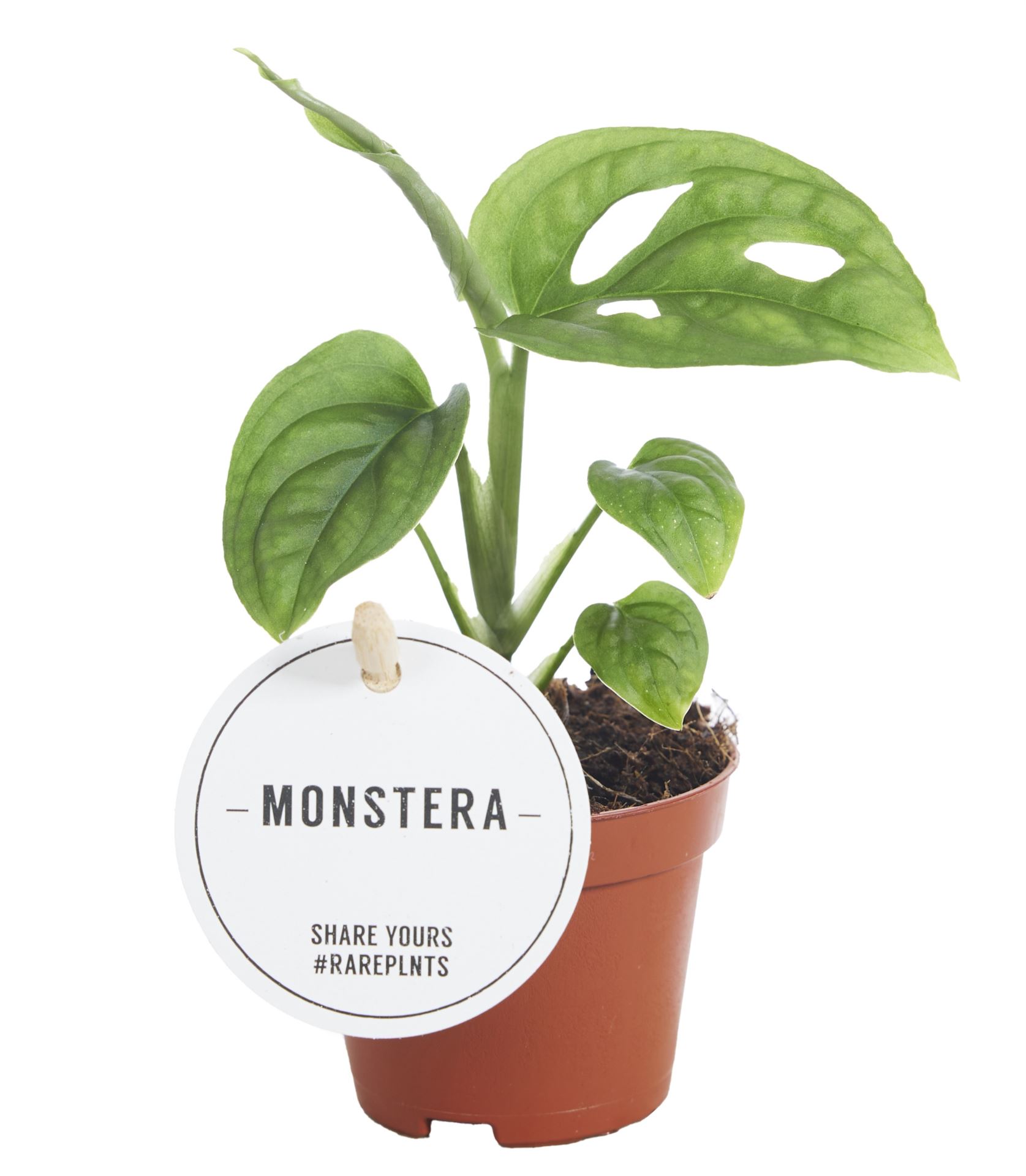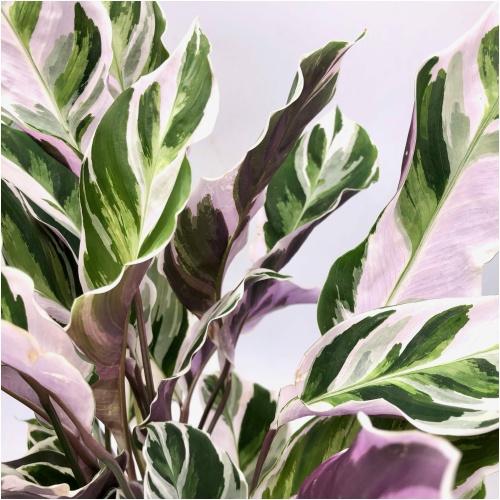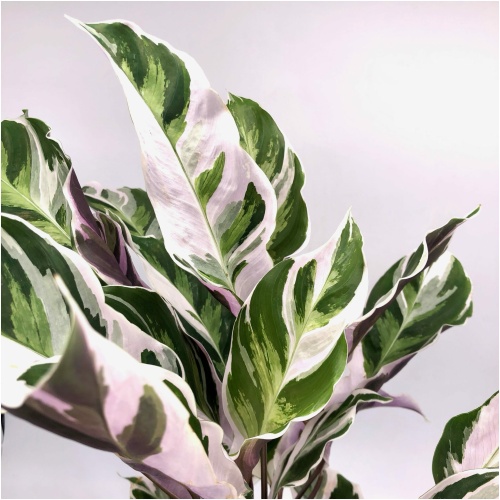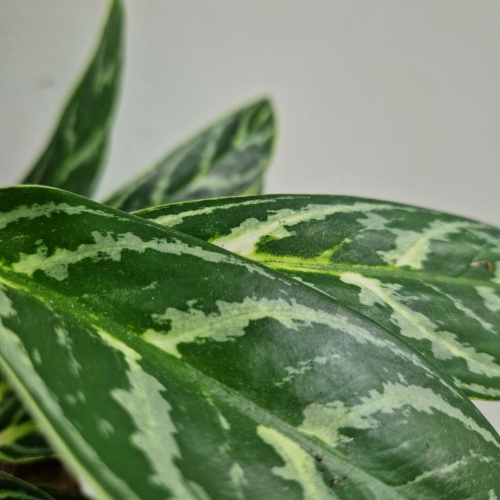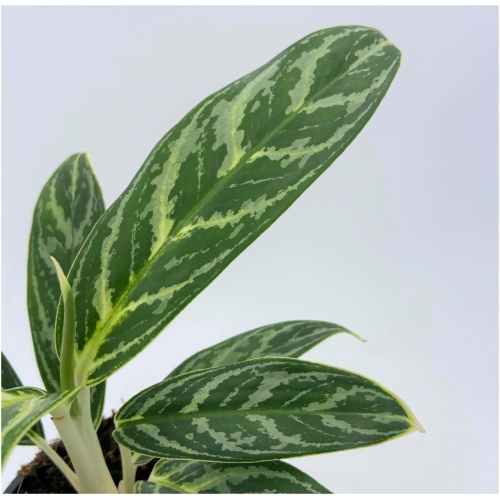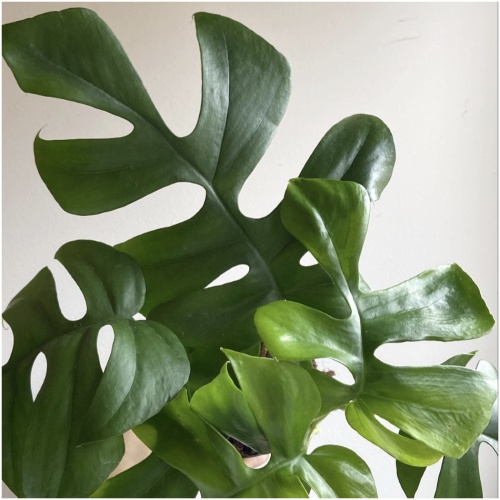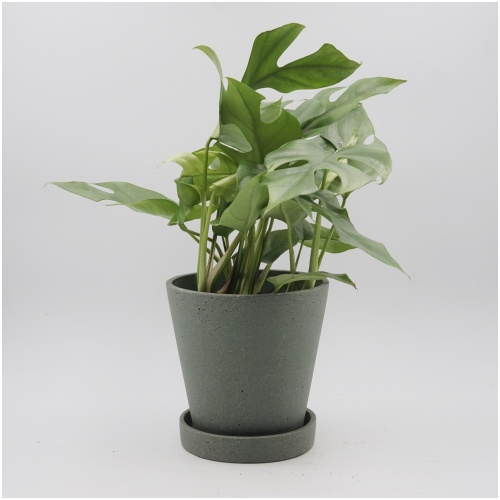- There are no products in the shopping cart.
Monstera Esqueleto, baby plant
Monstera Esqueleto develops large leaves with large windows.
Diameter plastic pot: 6 cm
Height: 12 cm
In stock
Monstera Esqueleto care is similar to that of other Monstera species, but requires some specific considerations. Here are some basic care tips:
Light: Monstera Esqueleto prefers bright, indirect light conditions. Direct sunlight should be avoided as this can lead to leaf burns. A location with bright but diffuse light or in the shade of larger plants is ideal.
Temperature: The ideal temperature for the Monstera Esqueleto is between 18°C and 24°C. It does not tolerate sudden temperature fluctuations or draughts.
Watering: Keep the soil evenly moist, but not soaked. Allow the top layer of soil to dry slightly between waterings. Excessive watering can lead to root rot. It is important to pay attention to the needs of the plant and not to overwater it,
Humidity: Monstera epipremnoides prefers high humidity. It can benefit from regular spraying or the use of a humidifier, especially indoors where the air is dry.
Soil: Use a well-drained potting soil mix that is rich in organic matter. A slightly acidic pH value of the soil is preferred.
Fertilization: Fertilize the plant every two to four weeks during the growth phase in spring and summer with a balanced, liquid houseplant fertilizer. Fertilization can be reduced or discontinued in autumn and winter.
Support: As Monstera epipremnoides is a climbing plant, it needs a support on which it can grow. Bamboo poles, moss sticks or a trellis are ideal for supporting the plant and helping it to climb.
The name "Esqueleto" means "skeleton" in Spanish, which refers to the characteristic appearance of the leaves of this plant. The Monstera Esqueleto is also called Monstera epipremnoides, but it is different from the Monstera adansonii, despite the similarities:
- Leaf shape: One of the main differences between the two species is the shape of their leaves. Monstera adansonii typically has more oval or heart-shaped leaves with distinct perforations along the edges, reminiscent of Swiss cheese. Monstera epipremnoides, on the other hand, often has broader and more elongated leaves, often with less pronounced perforations.
- Leaf size: In general, Monstera adansonii has smaller leaves compared to Monstera epipremnoides. However, leaf size can vary depending on the environmental conditions and growth stage of the individual plant.
- Growth habit: Although both species are climbers, they can have different growth habits. Monstera adansonii typically produces longer tendrils with smaller leaves along the stems, while Monstera epipremnoides can have shorter internodes and larger leaves.
- Leaf texture: The texture of the leaves can also differ between the two species. The leaves of Monstera adansonii are often thinner and more papery, while the leaves of Monstera epipremnoides can be thicker and more leathery.
- Availability: Monstera adansonii is more commonly cultivated and much more available in the horticultural trade than Monstera epipremnoides, which is harder to find.

